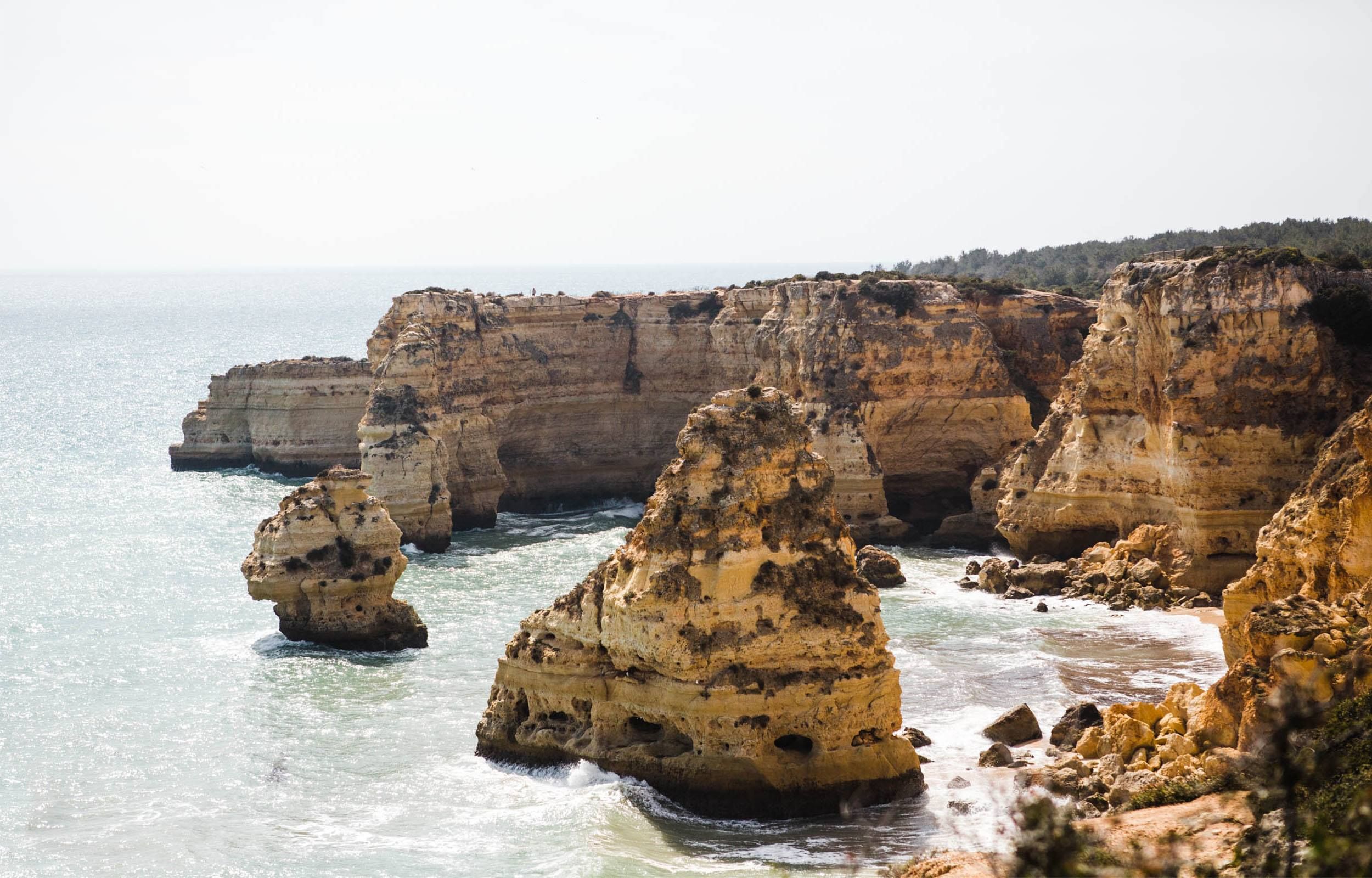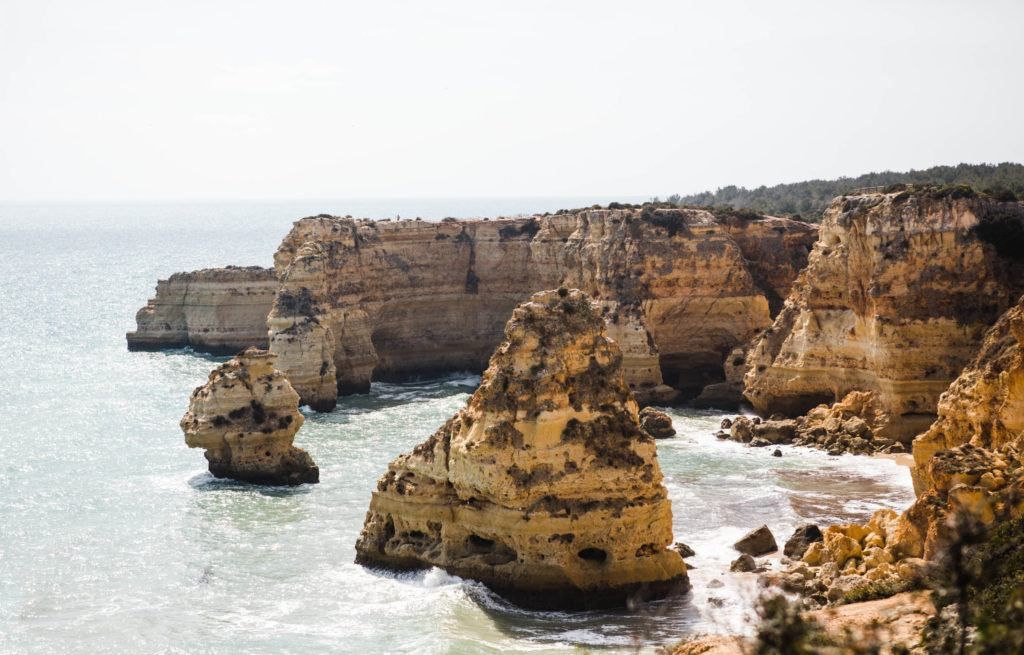You love photography. You live it, you breathe it, and it’s all you can ever think of doing in your life. And you’re good at it, better than some of the other people you know who also love photography.
But despite all this, you feel… stuck.
You’re not booking jobs, getting clients, or making money from something you are passionate about. And when you post your best work on social media, all you hear are crickets.
So, what could be the problem?
While there can be several factors that prevent you from making a career out of your photography, like skills, talent, etc., one of the more obvious ones is that no one, apart from your immediate family, sees all the amazing work that you put out there.
If you think that taking a pretty picture, editing it, and then posting it on social media is all that is needed to be an overnight photography success, you are sadly mistaken. Unfortunately, there are hundreds or even thousands of photographers in your area who are doing the same or similar work, and standing out is hard work.
So how can you, as a photographer, make yourself visible to more people?
One of the easiest and most effective ways to bring your talent and skill to the forefront is by creating and maintaining a photography blog.
If you were to think of photography as a career, your photography website or blog is like a business card, whereas your social media is like a handshake. A handshake is great for that initial introduction, but a business card is what people hold on to and reach out to when they want to connect, right?
One of the easiest and most effective ways to bring your talent and skill to the forefront is by creating and maintaining a photography blog.
The important thing for maintaining an online presence and having a blog or a website is to have a way to represent your body of work (i.e. your portfolio).
It is a way for you to showcase your own unique style of work, your personality, and even your life (depending on how comfortable you are putting all that stuff out there).
It is no secret that at the end of the day, people always buy from people they like, know, and trust. By letting a bit of who you are as a person showcase what makes you an artist, potential clients are more likely to take notice and eventually reach out to book you for gigs.
So, once you have decided to start a photography blog or website, there are a few things to keep in mind.
Key Lesson: Social media is like a handshake. It’s an introduction. A blog or website is more like a business card. It says you are serious. When someone needs a photo, they’re more likely to think of you when they know you’re serious about your work.
Choose a Domain Name and a Hosting Service
What is in a name? Well, everything!
When you decided to start your photography business, chances are you picked a name that meant something to you.
Similarly, when you choose a website or a photography blog, pick a name that is indicative of what you do.
Most people choose their name with the suffix of ‘photo’ or ‘photography’ at the end.
This makes it easy to communicate to others as well as easy for online search engine optimization, or SEO.
SEO is key to being found online by potential customers.
Other options are to include your location in your name. So, for example, ‘San Diego Family Photographer.’ Begin with a list of potential names and do a quick google search to see if those names are taken.
Key Lesson: Pick a name that is an indicator of what you do with your photography. Including the words ‘photographer’ or ‘photography’ helps with SEO. Also including your location helps to localize search options to folks that are close to you. Be sure to check and make sure that the name is available!
Once you choose a name, you also need to find a hosting service provider who will host your site for you. Some of the more popular options are Bluehost, GoDaddy, and even Google G Suite. This is most likely going to be associated with an annual hosting cost, so pick an option that works best for you.
Key Lesson: Check various hosting services to see which option best fits your budget and needs.
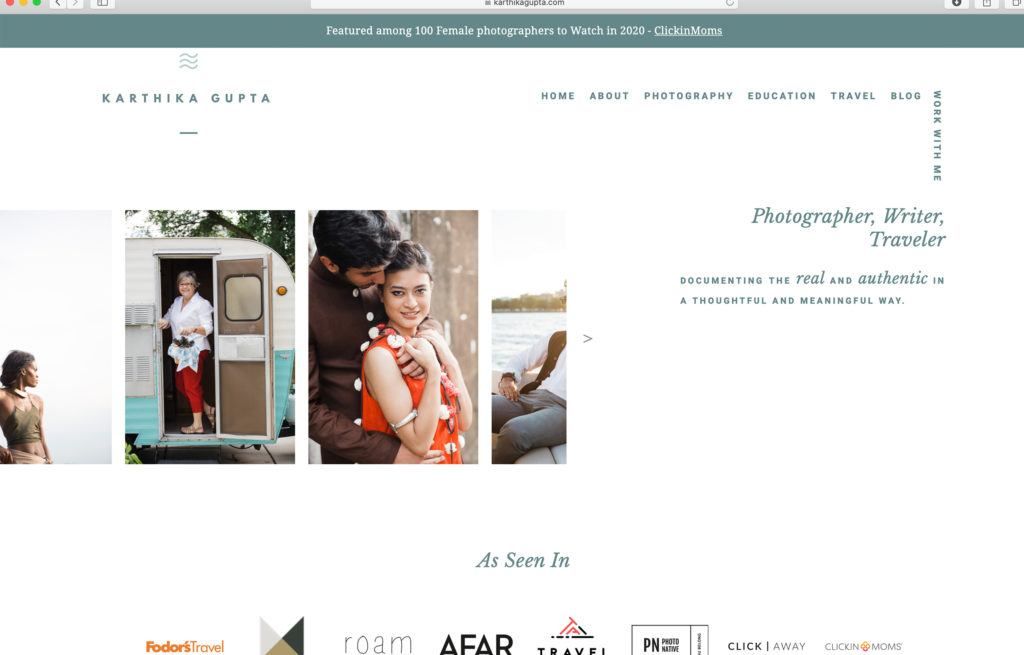
Screenshot of the author’s blog
My first photography blog had a blogspot.com extension.
I quickly moved away from that to a more branded website/blog with my name as my domain – something that I own and can customize as my business evolves.
Getting a custom website, with a custom URL (in most cases your business name), takes it up a notch in terms of creating brand awareness (you can look at low-cost options like Square Space).
It is much easier to tell a client that your portfolio can be found at (for example) “www.karthikagupta.com,” rather than saying “karthikagupta.blogspot.com.”
Depending on your business name, this can be a mouthful and difficult to remember.
Key Lesson: By creating a website URL that utilizes your own name or business name, it makes it easier for people to remember.
Choose a Theme for Your Photography Blog/Website
Once you choose a name for your blog and hosting service, the next thing to choose is a template or a theme.
There are many free and paid options for choosing a theme for your blog.
The good news is that many independent developers have created unique and pretty themes that are specifically geared towards visual arts and photography.
You can even choose to work with a developer to create a theme or a style that is unique to you.
When you are just starting, you might be tempted to go for the cheapest option available (a.k.a. free). There are many providers like Wix and WordPress that have simple and easy-to-use templates that are geared towards photographers.
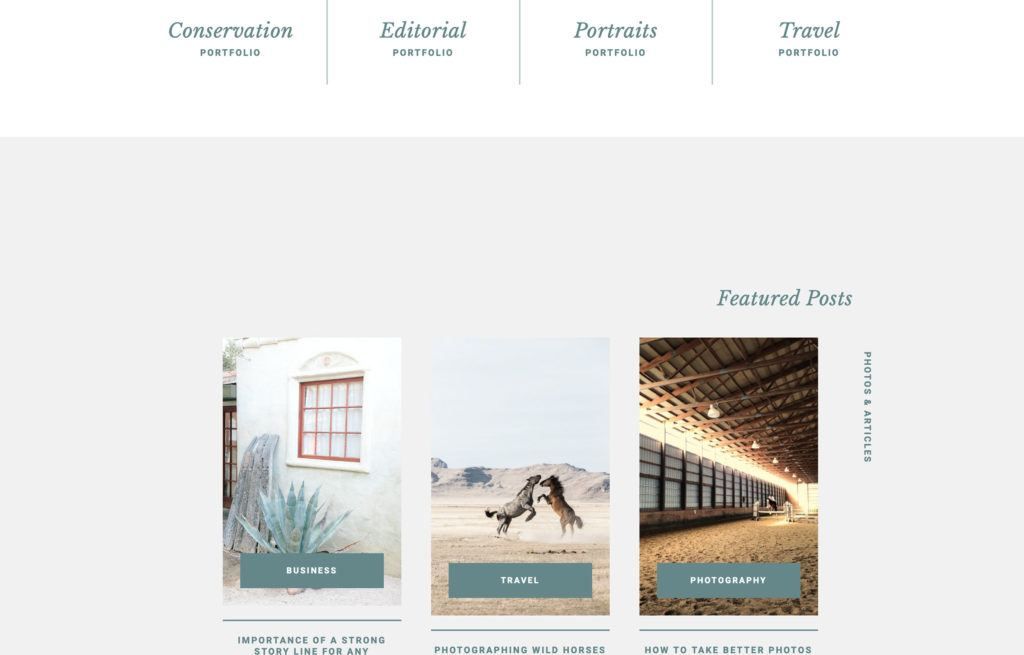
Screenshot by Karthika Gupta
No matter what option you use, make sure that it is one that is easy to use and easy to maintain.
Key Lesson: A theme for your website can range from a unique design created just for you all the way down to a free option. Whichever method you choose, make sure it is easy to use and maintain!
Within my website, I have sections for a portfolio review as well as a blog where I share relevant content according to my business goals: teaching photography, writing photography-related articles, and creating travel narratives for other brands.
If you want a theme that is an extension of your images, there are many free options for uploading your images to the Internet.
Sites like WordPress and Blogger (previously called Blogspot) offer a way to create a blog. Flickr and 500px are other options to upload and host your images.
Recommended Reading: If you want to avoid boredom and repetition in your photography, you can inject some creativity into your work, by using the fun and challenging assignments in our Creativity Catalog. Go here now to take a look!
Use Keywords Across Your Website/Blog
There is so much to learn about SEO.
It is likely a guide on its own and can be intimidating at first.
But the key thing to remember about SEO is to use keywords that are unique to you in your blog or website.
These keywords are instrumental in getting you ‘found’ or ‘discovered’ online.
For example, if you want to specialize in family photography in San Diego, then your unique keywords are likely going to be a combination of ‘Family Photography In San Diego,’ ‘San Diego Family Photographer,’ ‘Family Photographer in San Diego,’ and various other combinations.
But the key thing to remember about SEO is to use keywords that are unique to you in your blog or website.
You will create content specific to those keywords and add these keywords throughout your content (as applicable).
A key thing to note about SEO and Google is that keywords need to appear naturally throughout your content; otherwise, you get penalized by Google for what is known as keyword stuffing.
This can harm your website. Remember my earlier comment about your website is your business card? Your business card should be subtle yet effective.
Similarly, your website needs to be precise and to the point, without being excessive, to be effective.
Key Lesson: Keywords are crucial to people finding your website online. Use relevant keywords throughout your content. However, don’t overdo it, or you might be penalized for keyword stuffing.
Post Content Consistently and Regularly
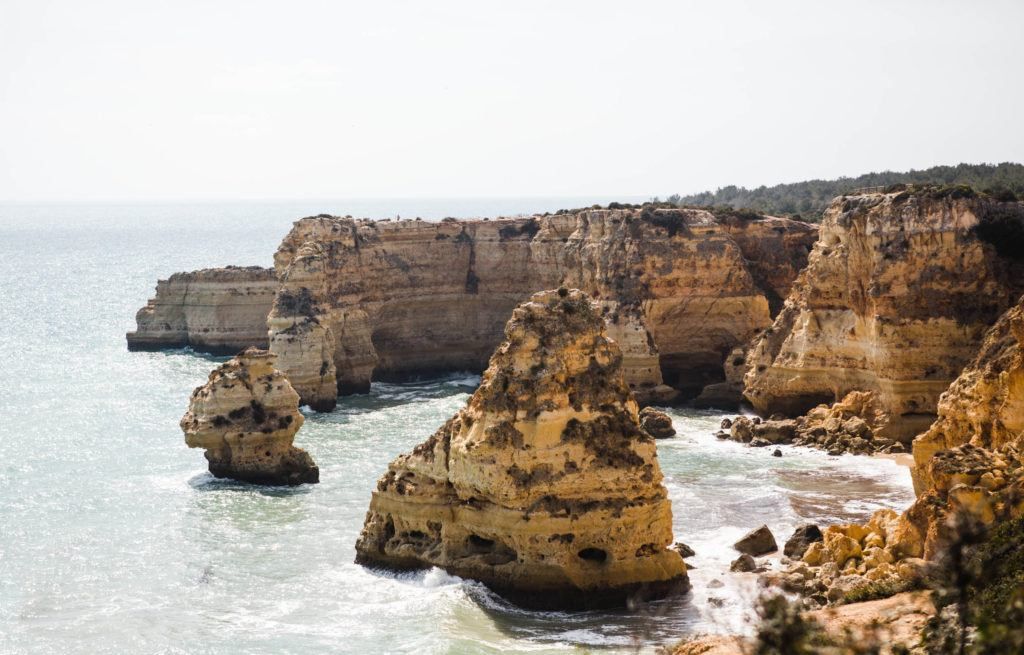
Photograph by Karthika Gupta
A photography blog is not a static entity.
For you and your work to be discovered online, you must create content consistently and regularly.
That content can be in terms of your latest work, your inspiration, or even advice that you want to provide to your clients.
If you want to teach photography, it can even be articles around a particular genre of photography.
All of these types of articles showcase you as a professional beyond just someone who can press a button to take a pretty picture.
Every six to eight months, I make it a point to update my portfolio online, so it showcases my most recent work.
This also takes into account any pivots in style, content, and genre.
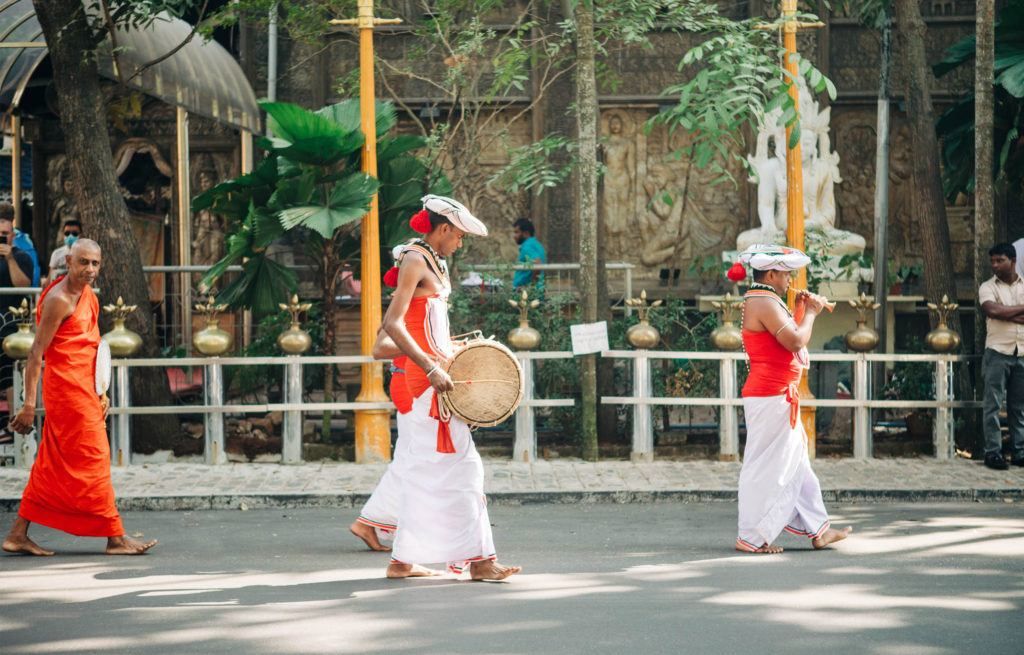
Photograph by Karthika Gupta
No matter what you choose, have a plan and stick to it.
Posting content for the sake of posting content isn’t really going to get you anywhere.
Instead focus on quality – quality content that showcases who you are as an artist, your strengths, your personality, and your creativity.
Key Lesson: Updating your website is essential. You should write blog posts at least once a week. Long-term assets such as your portfolio images should be updated at least every six months.
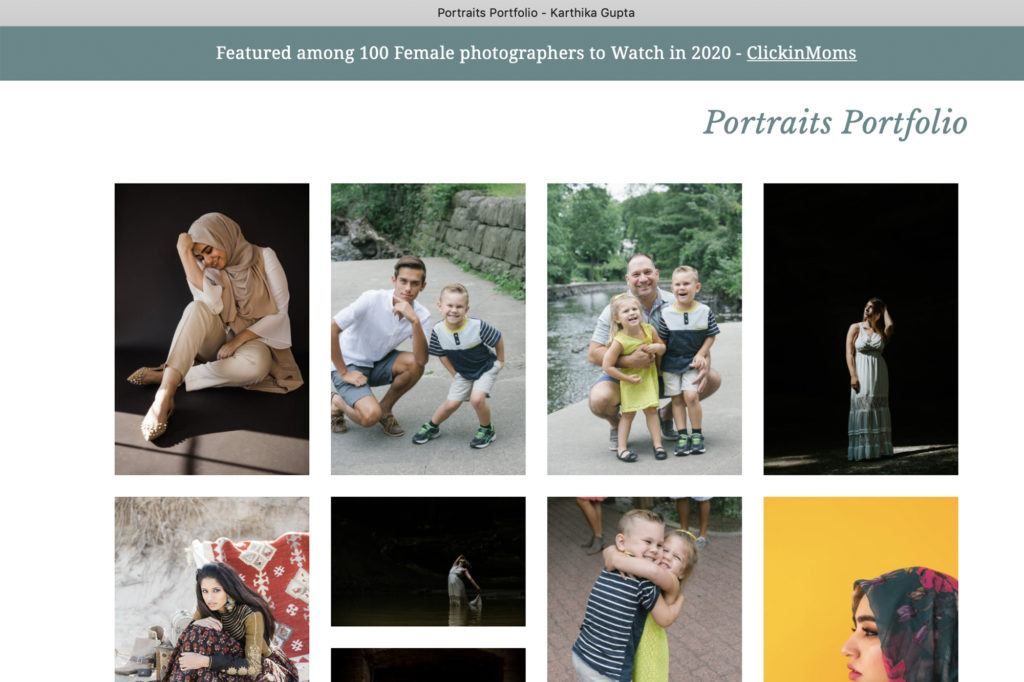
Screenshot of the author’s blog
This image depicts an updated portfolio on my website. I photograph people’s portraits.
Maintain a Social Presence and Develop a Community
As you think about your online presence, also consider social media.
There are many options to choose from to be socially engaged with your clients, and more importantly, your potential clients.
With so many social media platforms out there, it’s very easy to get overwhelmed.
My advice would be to pick two or three and actively engage with your audience there.
In the initial part of my career, I focused on Facebook and then added Twitter and Instagram to my social media strategy.
As you create your own social media strategy, remember to be consistent across the board. Let your website and social media tools speak the same language and showcase your style consistently.
Key Lesson: Consistency across all social media and your website is important to establishing your brand.
Recommended Reading: If you want to avoid boredom and repetition in your photography, you can inject some creativity into your work, by using the fun and challenging assignments in our Creativity Catalog. Go here now to take a look!
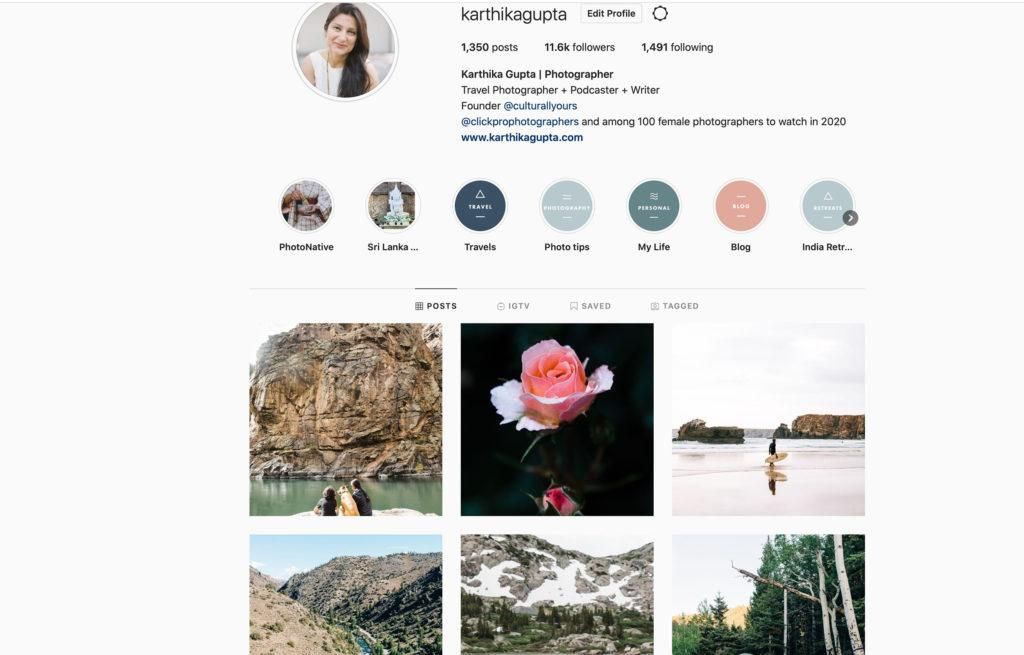
Screenshot of the author’s Instagram account
I love Instagram for a visual representation of my work.
I also intermingle personal projects, family portraits, and inspirational work in there to give potential customers a feel for who I am as a creative, an artist, and a person.
I love having a photography blog and a website.
At the very basic level, this is something that I own and control.
The thing with social media is that it is borrowed space.
Yet, many of us invest so much time and effort into building an audience on social media and ignore our blog/website. That concentration in effect dilutes our personal brands.
Ask yourself this important question: if social media were to disappear, how would potential customers know your work?
Having a photography blog is a great way to create an online presence that showcases what you do and what you do well.
Self-Check Quiz:
- Social media is like a handshake. A great website or blog is like a _______________.
- Once you’ve decided to create a website, you need a domain and a _____________.
- Why is the selection of your website name very important?
- Name two website hosting companies.
- Square Space offers low cost __________.
- True or False: There is no such thing as a free website theme.
- You should make sure that your website theme is easy to use and easy to __________.
- Why are keywords important?
- What is keyword stuffing?
- How often should you post to your blog?
- How often should you update the portfolio images on your website?


